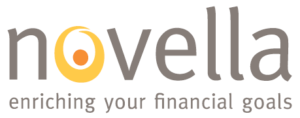Do you know what child benefits you’re entitled to when you have a newborn in Canada? Raising a child is not an easy task and can be especially difficult in a country with a high cost of living like Canada. Fortunately, our government does provide a lot of benefits to support us when it comes to raising our next generation. This blog post will cover the different child benefits that you can receive from the Canadian government, beginning from when you are pregnant to the first six years of being a parent, and through to sending your kids to post-secondary.
Employment Insurance for Parents
If you have been working and paying into your EI premium, then you are entitled to receiving 55% of your income each week, up to a maximum of $573 per week. There are two parts to this benefit which is maternity leave and parental leave.
Maternity leave & Parental leave in Canada
Only the mother is eligible to apply for maternity leave and has to be within 13 weeks of the expected due date. You will receive 55% of your original income, or max of $573, for the next 15 weeks. The benefit can then be followed by parental leave benefits which you do not have to apply for separately. You can apply for both maternity and parental leave at once. In Canada, you have the choice to apply for the standard or the extended parental leave. With the standard benefit, parents can receive the benefit payment for up to 40 weeks but neither the mother or father can receive more than 35 weeks of this benefit.
For example, John and Mary are new parents and Mary applied for both the maternity and parental benefits. She would first receive 15 weeks of her maternity benefit, followed by 35 weeks of parental benefit. The remaining 5 weeks of standard parental benefits would have to be taken by John if they would like to maximize the standard benefit. Mary could also decide to take 30 weeks of parental leave and let John take 10 weeks of parental leave, as long as it adds up to 40 weeks.
Now what if you need a longer time to take care of your newborn? You can apply for the extended parental benefit which covers you up to 69 weeks. With the extended benefit, one parent cannot exceed 61 weeks of extended benefits and the reduced rate is 33% of your income with a maximum of $344 weekly.
You can use this calculator to determine an estimate of what you can receive on your maternity and paternity leave here. Your family situation may determine which option you would like to choose. As an example, while the extended benefit is less per week, if you factor in the cost of childcare, it might make sense for some families to go this route.
Canada Child Benefit (CCB)
The next benefit is for when your newborn arrives. The Canada Child Benefit, or CCB for short, gives every child under 6 years of age up to $6765 per year. Children between ages 6 and 17 can receive up to $5708 per year. This is equivalent to roughly $500 a month per child throughout 18 years. This benefit can be applied for once the child is born using the child’s birth certificate. To be eligible, either parent must be a tax paying resident of Canada. This benefit is also income dependent so every family will receive a different amount based on their income. If your household income is over $200,000 then you are not eligible for the benefit.
To find out exactly how much you will receive from the CCB, you can use this online calculator from Canada.ca. Another great thing about the Child Care Benefit is that it is tax-free so families do not have to pay taxes on payments received when filing for their taxes.
Education Benefits
Education is probably one of the most important things for a child so as you may expect, there are many benefits that help children with their education in Canada. In Canada, children receive free education from the age of 6, all the way up to when they are 18. Most daycares for children under the age of 6 are not free (except for the in-laws daycare or the grannies’ daycare) so subsidies are provided to help with childcare. This benefit is provided by the provincial governments so it will be different for each province. For example, in British Columbia, there is the Affordable Childcare Benefit that provides families with a maximum of $1250 per month. Normally, the younger the child, the higher the subsidy the parents would receive. However, in BC, families with a combined income of over $111,000 do not qualify for this benefit.
In Canada, the cost of childcare is tax deductible but it must be claimed by the parent with a lower income. Now what if one parent is not working so there is no income? Unfortunately in that care, you would not be eligible for this benefit because the government assumes that the parent that does not work would be providing care for the child.
Now let’s talk about post-secondary or education for children over 18. Unless your child receives a scholarship, most post-secondary institutions will require you to pay and tuition is not cheap. In fact, in 2020, it’s about $11,000 – $21,000 per year. To prepare for post-secondary for your child, there is the Registered Education Savings Plan, or RESP for short. This plan is a savings account registered with the government of Canada where every dollar you save into the account, the government will match it by 20%. In other words, if you contribute $2500 per year, the government will grant you $500. A smart tip is using the paycheque from the Child Care Benefit to contribute to your RESP so you essentially are using free money to attract more money! You can learn more about RESP in my RESP 101 blog post here.
There is one more child benefit available but this one is applicable only to BC residents only. In British Columbia, families with children may qualify for the Property Tax Deferment Program, which is a low interest loan program that allows you to defer your property taxes on your principal residence. This is a great program for families in need for cash flow as it would allow you to defer paying your property tax until you sell your property or when your child has grown up. To determine if you qualify for this program, you can find out here. With the interest rate sitting at prime 2.45% currently, it might be an advantage to leverage this low interest rate and invest if the return is higher than this interest rate.
I know taking care of a newborn can be overwhelming physically, mentally, and financially. Bottom line is, there are many benefits you can receive from both the provincial and the federal government. If you would like to get a complimentary assessment of your finances to prepare for your growing family, please feel free to reach out for a personalized recommendation. Or if you would like to learn more about building your wealth in Canada, subscribe to my YouTube channel where I cover topics on retirement, wealth and insurance to help Canadians make better financial choices.

